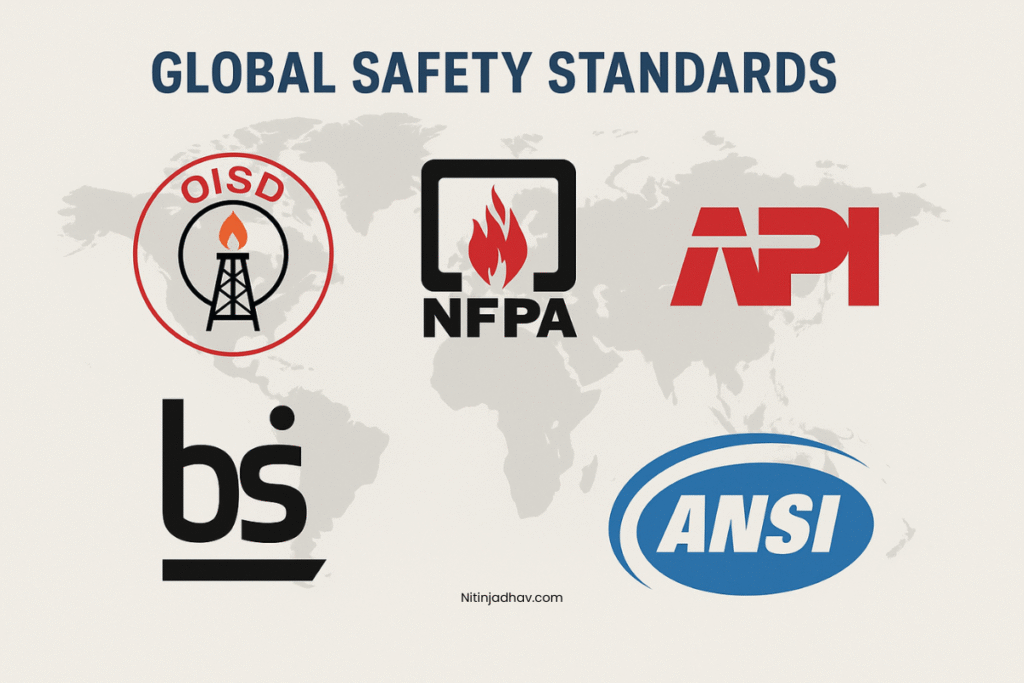🔍 Introduction
In industries that handle hazardous chemicals and complex processes, safety is paramount. One of the most critical tools used in process safety management is the HAZOP Study (Hazard and Operability Study). This structured and systematic technique is widely adopted in sectors such as oil & gas, petrochemicals, pharmaceuticals, chemicals, and power generation to identify and mitigate potential hazards and operability issues during process design, modification, and operations.
In this comprehensive guide, we will explore everything you need to know about HAZOP: its purpose, methodology, team roles, applicable standards, real-life examples, and integration with other safety studies.
📌 Also Read: Introduction to Process Hazard Analysis (PHA)
👁️ What is HAZOP?
HAZOP (Hazard and Operability Study) is a qualitative risk assessment method that examines how deviations from the intended process design can lead to hazardous events or operational issues. It uses a structured brainstorming approach facilitated by guide words such as “No,” “More,” “Less,” “Reverse,” etc., to identify process deviations and analyze their causes and consequences.
Originated by ICI (Imperial Chemical Industries) in the 1960s, HAZOP has now become a standard technique under several global safety regulations and guidelines such as IEC 61882, OSHA 29 CFR 1910.119, and CCPS best practices.
🌐 Objectives of HAZOP
- Identify potential hazards that can affect personnel, equipment, environment, and reputation.
- Highlight operability issues that may hinder process performance.
- Recommend design or procedural improvements to eliminate or reduce risks.
- Assist in compliance with regulatory standards and industry best practices.
- Promote interdisciplinary collaboration among stakeholders.
⏳ When is HAZOP Performed?
HAZOP can be conducted at various stages of a project lifecycle:
| Phase | Objective |
|---|---|
| Feasibility | Initial review of conceptual design |
| Basic Design | Evaluate PFDs and block flow diagrams |
| Detailed Design | Assess P&IDs, cause & effect matrices |
| Pre-Startup | Validate design before commissioning |
| Operational Change | Review changes through MOC process |
| Decommissioning | Ensure safe retirement of assets |
🔧 Key Components of a HAZOP Study
1. Nodes (Study Sections)
The process is divided into nodes or sections that have clear design intent and are defined by equipment boundaries or functional areas (e.g., pump discharge to vessel inlet).
2. Parameters
Common parameters considered include:
- Flow
- Pressure
- Temperature
- Level
- Composition
- Agitation
3. Guide Words
Guide words are combined with process parameters to provoke thought on potential deviations.
| Guide Word | Meaning |
|---|---|
| No/Not | Complete absence |
| More | Higher than intended |
| Less | Lower than intended |
| Reverse | Opposite direction or order |
| As well as | Additional to expected |
| Part of | Incomplete |
| Other than | Completely different parameter |
4. Deviations
These are the abnormal process conditions generated by combining guide words and parameters.
5. Causes and Consequences
Each deviation is analyzed to identify possible causes (e.g., equipment failure, operator error) and their consequences (e.g., overpressure, fire, production loss).
6. Safeguards and Recommendations
Existing controls are recorded, and new recommendations are proposed where needed.
📅 HAZOP Study Workflow
- Preparation
- Define scope and objectives
- Gather design documentation (P&IDs, line lists, datasheets)
- Select experienced team members
- Node Identification
- Divide system into logical sections for review
- Deviations Identification
- Apply guide words to parameters in each node
- Cause and Effect Analysis
- Identify what can go wrong and how it may affect the process
- Review of Safeguards
- Document current safety systems (alarms, trips, relief devices)
- Recommendations and Actions
- Propose additional controls or design changes
- Documentation and Reporting
- Record findings in HAZOP worksheets and generate final report
📄 HAZOP Worksheet Format
| Node | Parameter | Deviation | Cause | Consequence | Safeguards | Recommendation |
|---|---|---|---|---|---|---|
| P-101 | Flow | No Flow | Pump failure | Reactor run dry | Low flow alarm | Add spare pump with auto start |
👥 HAZOP Team Composition
A successful HAZOP requires a cross-functional team with diverse expertise:
- Facilitator/Leader – Experienced in HAZOP methodology
- Process Engineer – Understands the process design
- Operations Representative – Provides practical knowledge
- Instrumentation Engineer – Advises on control systems
- Maintenance Engineer – Highlights equipment failure modes
- HSE Representative – Focuses on safety and compliance
📜 Applicable Standards & Guidelines
- IEC 61882 – International guideline for HAZOP
- OSHA 29 CFR 1910.119 – U.S. Process Safety Management standard
- CCPS Guidelines – Center for Chemical Process Safety
- OISD Standards – India-specific petroleum safety standards
- API RP 750 – Management of process hazards
📍 Learn More: Process Safety Management (PSM): Golden Rules
🚀 Software Tools for HAZOP
Several digital tools can streamline the HAZOP process:
- PHAWorks RA Edition
- PHA-Pro
- HAZOP Manager
- PHAST (for consequence modeling)
- BowTieXP (for visualizing barriers)
🔗 Also Check: Top 10 Software Tools for Process Safety Engineers in 2025
🤔 Common Pitfalls in HAZOP Studies
- Incomplete documentation or P&IDs
- Lack of experienced facilitator
- Dominance of certain team members
- Overlooking human error scenarios
- Poor follow-up on recommendations
🔄 Integration with Other Studies
HAZOP is often integrated with:
- LOPA (Layer of Protection Analysis) – To quantify risk and validate recommendations
- FMEA (Failure Mode and Effects Analysis) – Focused on equipment-level failure modes
- QRA (Quantitative Risk Assessment) – For consequence modeling
- SIL (Safety Integrity Level) – For safety instrumented systems
📍 Read Next: SIL vs LOPA – What’s the Difference?
🎯 Real-World Example: Reactor HAZOP
Node: Feed line to Reactor R-101
Parameter: Flow
Deviation: More Flow
Cause: Control valve stuck open
Consequence: Reactor overpressure, potential rupture
Safeguards: Pressure relief valve, high-pressure alarm
Recommendation: Add redundant pressure transmitter and SIS trip logic
🌟 Advantages of HAZOP
- Thorough and systematic
- Enhances cross-functional communication
- Promotes proactive risk identification
- Improves process reliability
- Aids compliance with regulations
⚠️ Limitations of HAZOP
- Time and resource-intensive
- May not capture all human errors
- Results vary with team experience
- Qualitative outcomes may lack prioritization
📆 Post-HAZOP Activities
- Action Tracking: Assign owners and deadlines
- Design Revisions: Update drawings and specifications
- Follow-up Meetings: Ensure closure of recommendations
- Training: Implement learnings into operator training
- Audits: Periodic reviews to ensure long-term effectiveness
🌐 Conclusion
A well-conducted HAZOP Study is the cornerstone of a robust process safety management system. It not only identifies potential hazards and design flaws but also fosters a culture of safety and continuous improvement.
When integrated with tools like LOPA, FMEA, and QRA, HAZOP becomes an even more powerful mechanism for risk-based decision-making in high-hazard industries.
📌 Explore More:
For templates, checklists, and PPTs, stay tuned to NitinJadhav.com


